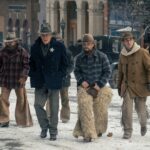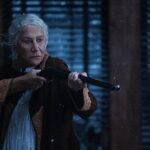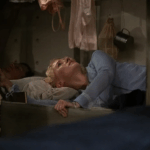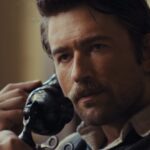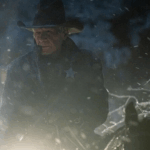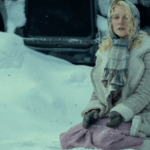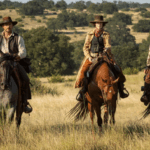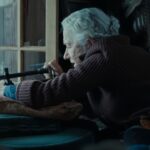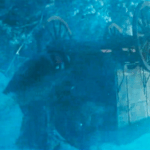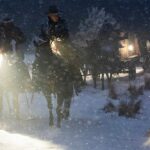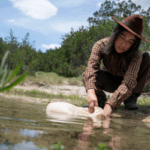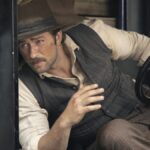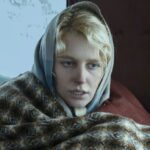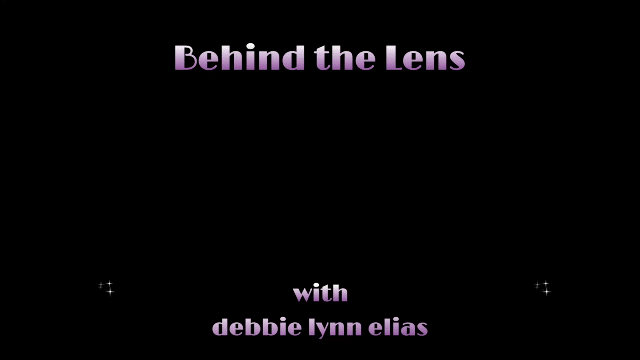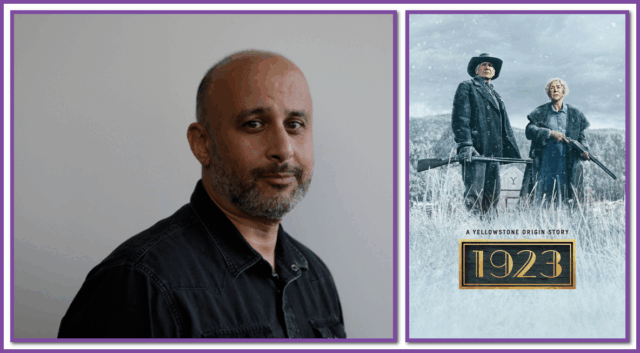
Exclusive interview with GEORGE HADDAD, Supervising Sound Editor for 1923, A YELLOWSTONE ORIGIN STORY, Season 2.
SYNOPSIS: The second prequel to the acclaimed series YELLOWSTONE (the first being 1883), 1923 is the continuing story of the Dutton family and their struggle to survive and expand their Montana ranch during the 1920s. Created and written by Taylor Sheridan, 1923 explores themes of family legacy, the rise of prohibition, and the Great Depression while focusing on this generation of Duttons led by Jacob (Harrison Ford) and Cara (Helen Mirren) as they face drought, expansion, a changing modernizing world, conflicts with other ranchers and Native Americans.
In Season 2, we find that a cruel winter brings new challenges and unfinished business to Jacob and Cara back at the Dutton ranch. With harsh conditions and adversaries threatening to end the Dutton legacy, Jacob and Cara’s nephew Spencer embarks on an arduous journey home from abroad, racing against time to save his family in Montana. Meanwhile, Spencer’s wife, Alexandra, sets off on her own harrowing trans-Atlantic journey to find Spencer and reclaim their love.
With all seven episodes of Season 2 and eight episodes of Season 1 directed by Ben Richardson and written by Taylor Sheridan, there is a wonderful tonal continuity of story and characters as we are immersed in 1923 and the world of the Dutton family. As a devotee of the flagship series Yellowstone, the prequels 1883 and 1923 immerse us even deeper into the legacy and wonder of the Duttons and the Yellowstone Ranch, as well as our collective history of this country through the Dutton microcosmic lens.
Led by Harrison Ford and Helen Mirren as Jacob and Cara Dutton, Season 2 of 1923 is the most significant of the series, as we find ourselves in a rapidly changing world with technology and automobiles and all that that brings, battling against the analog hard but simple life we’d come to know in Season 1. And this mix of “old and new” creates a perfect canvas in which to play for Supervising Sound Editor GEORGE HADDAD and his team at Formosa Group, particularly given Sheridan’s writing style and Richardson’s visual directing style. Cinematographer turned director, Richardson has a very strong sense of visual immersion in his storytelling, which requires a soundscape that tells its part of the story to create a perfect storytelling blend of sight and sound. From the howling Montana winds to the crack of gunfire and the rumble of stampeding horses, the Formosa sound team and Supervising Sound Editor GEORGE HADDAD play a huge role in making 1923 feel real. Every gust of icy wind, every tense showdown, and every moment of quiet before the storm is carefully designed to pull viewers deeper into the Duttons’ world with the grit, danger, and drama of frontier life.
A decades-long admirer not only of the sound work done by Formosa Group on a multiplicity of projects, but also of the individual team members themselves, I have long said I hope to make it through the entire Formosa roster and interview each “soundie” before putting down my critic’s pen and recorder. Speaking with GEORGE HADDAD about 1923 Season 2 in this exclusive interview is one more part of my dream bucket list fulfilled. (Full disclosure: At the time of our interview, I had only viewed five episodes of Season 2 as episodes 6 and 7 had not been made available to me, although I had seen all of 1923 Season 1 and all of 1883, both of which George Haddad was Supervising Sound Editor. Since this interview, I have watched 1923 season 2 in its entirety – 4 times.)
GEORGE HADDAD is enthusiastic, passionate, and dedicated to his craft, and he has a great sense of humor, all of which you’ll hear loud and clear on listening to this interview. (And yes, sound design/editing/mixing is indeed a craft and has been ever since the first talkie almost 100 years ago.)
As we discuss the soundscape for Taylor Sheridan’s 1923, highlighting the meticulous attention to detail in capturing and enhancing authentic sounds from the 1920s, we dive into the immersive soundscape, which includes various environments like ships, trains, and different types of cars with George emphasizing the importance of research, using historical records and sound libraries, and the collaboration with composers Brian Tyler and Breton Vivian and music editor Kyle Clausen. We also discuss the unique challenges of capturing production sounds in specific locations and the creative process behind iconic scenes, like the snowstorm and cougar attack, and longhorn cattle stampedes through a town.
The primary difference between 1883 and 1923, and even between Seasons 1 and 2 of 1923, is the expanded world and technological landscape. In 1923, the sound design reflects a more complex, interconnected world with diverse environments like ships, cars, trains, and telephones. The sound team had to capture the sonic changes of the era, including different types of vehicles, communication technologies, and global settings like Africa and ocean voyages. This broader scope allowed for more nuanced and layered sound design, capturing the evolving soundscape of the 1920s with greater complexity and detail compared to the more confined setting of 1883.
As George explains, “We start with the script and visuals from Taylor Sheridan and his team. Our goal is to research and capture the authentic sounds of the 1920s era. We work closely with historians to understand what different technologies and environments sounded like – from telephone operators to various types of trains, cars, and ships. We prioritize using actual production sound when possible, and when we can’t, we carefully craft sounds from our library or through Foley techniques. The key is to make the sound feel like there’s labor and effort behind every action, reflecting the challenging life of the time. We want the audience to feel immersed in the world of 1923, with sounds that tell the story of the characters’ experiences.”
Integrating sound with visuals is a meticulous process that starts with the original filming and writing. The aim is to make the sound “melt in like butter” by carefully matching the sound to the visual storytelling. For 1923, this meant:
- Researching historical sounds from the era
- Consulting historians about authentic sounds
- Using production sound when possible
- Creating Foley effects to enhance the authenticity
- Matching sound to the emotional tone of each scene
For specific sounds like telephones and telephone operators, they found recordings from the 1930s and consulted historians about how headsets and switchboards operated. The team meticulously researched details like train sounds (box car versus passenger), car engines (and there are multiple types of cars in 1923), and communication technologies to ensure sonic authenticity. They also recorded their own Foley effects and kept a growing library of period-appropriate sounds from previous projects like 1883 and the first season of 1923 to create a rich, immersive soundscape that reflected the technological and environmental realities of the 1920s.
Director Ben Richardson was deeply collaborative during the post-production of 1923. As George explained, “Ben was involved daily in the sound process, treating the series like a seven-hour movie. He was present throughout editing, mixing, ADR, and other post-production stages.” Describing Richardson as being “a kid in a candy store” – energetic and excited – this motivated the sound team to go above and beyond. His hands-on approach and enthusiasm made the collaboration very close and intensive, with Richardson providing specific input and feedback to ensure the sound matched his vision for the series. In many instances, there is a perfect marriage of sight and ambient sound and score, and no dialogue. The soundscape is so thoughtful and meticulous that it serves as the scene’s dialogue, eliminating the need for verbal exposition. One of the most exquisite instances of this are in Season 2 Episode 5 during a round up of stray cattle in an idyllic canyon, which is shortly followed by longhorns parading through town where the soundscape is an impeccable cacophony of cows hooves on a packed dirt road, lowing, dust rising, whistles and wrangling, pedestrians jumping onto wooden “sidewalks”. As you’ll hear, George talks about these scenes and more in the interview.
Another one of the most significant sonic scenes is a blizzard in Episode 2, which finds Jacob and his ranchhands caught in a blizzard overnight, requiring quick thinking to get them all through the night. As George explains, “the snowstorm scene was particularly challenging”. They didn’t want to simply blast the audience with strong winds, but carefully craft a nuanced soundscape. The team meticulously mapped out the sound, adjusting wind levels, introducing snow debris, and focusing on specific elements like horse sounds. Their goal was to ensure dialogue remained clear while creating an immersive emotional experience. They drew from personal experiences of winter storms to create authenticity, carefully mixing sounds to reflect the danger and intensity of the scene without overwhelming the visual storytelling. The approach was to use sound as a supportive narrative element that enhances the emotional impact of the visual sequence.
Sound is also used in Season 2 to convey the labor and difficulty of life in the 1920s, and the team purposely crafted sounds to convey this. For example, in Helen Mirren’s kitchen scene, they specifically chose sounds that would communicate the hard work of cooking without modern conveniences. Contrasting that are “service scenes” and a beautiful kitchen montage in Episode 5 which finds Alexandra having to work for her supper and passage on an elegant passenger train.
Nuance and levels of sound within a mix are crucial to the aural experience of 1923. For example, in Season 2 Episode 1, in two scenes we encounter a mountain lion on the front porch of the Dutton home. The first is a quiet face off between Jacob and the cougar and the second involves the faint sound of the cougar outside which Cara hears in the living room through the window glass which results in Cara picking up a shotgun and shooting through the window, killing the cougar. The layers of sound are impeccable, from the faint growl of the cougar with sound muffled by the window to the cock of the rifle and gunshot blast to the breaking glass to splintering wood window frame. We hear each defining moment of the action, but it is all seamless.
An important element to the 1923 experience is the series’ score and its tonal integration without the soundscape. Composers Breton Vivian and Brian Tyler created a score that was carefully sculpted to complement the story and dialog. For 1923, they took a more nuanced approach compared to Yellowstone, using lighter and softer musical motifs. George praised how they worked around the scenes, using music to support the storytelling rather than overpowering it. Notable is that within the score, you can still hear about five or six strains of the original Yellowstone theme woven into the music, creating a sense of continuity across the Yellowstone universe. With score in hand, it then fell to George and the Formosa team to edit and mix it appropriately into the series.
This is just a brief tip of the iceberg of our discussions about 1923 Season 2 in my exclusive interview with GEORGE HADDAD. You’ll hear much more as you listen to the interview itself.
As a teaser for you, George and I also discussed his work on the new AppleTV series The Studio, two episodes of which were made available to me at the time of our interview. Interestingly, the sound approach for The Studio was dramatically different from 1923. The key challenge was that every scene is filmed as a one-shot, which meant the sound had to constantly chase the camera’s movement. “We had to be subtle with sound panning and perspective shifts to avoid disorienting the audience. Since it’s a comedy, we were extra careful not to be intrusive with sound effects, prioritizing dialogue timing and comedic moments. The music, composed by Antonio Sanchez, plays a crucial supporting role, helping to bring viewers into or take them out of scenes. Unlike the period-specific approach of 1923, THE STUDIO allowed for more playful sound design, including needle drops and a score that pays homage to old Hollywood comedies. The one-shot filming style required a completely different sound mixing strategy compared to our more traditional approach on 1923.”
It can’t be stressed enough that the prime directive for GEORGE HADDAD and his team at Formosa Group is to always support the story, whether it’s the different sounds of a cougar (non-threatening versus threatening) or the contrasting audio between first-class passengers and kitchen staff on a train. Each sound is carefully chosen to extend and deepen the visual narrative. The collaborative environment at Formosa is driven by a collective desire to continually improve and push creative boundaries. George believes the team is motivated by wanting to be as good as their colleagues, always seeking to add something unique or different to the sound design. The approach isn’t about claiming something is “better,” but about exploring new ways to enhance storytelling.
TAKE A LISTEN. . .
by debbie elias, exclusive interview 03/26/2025
1923 is streaming on Paramount+.


